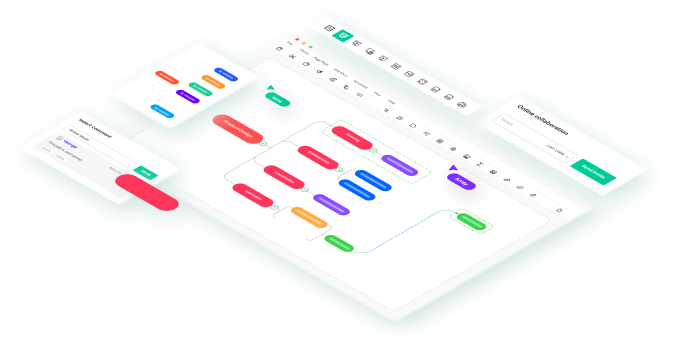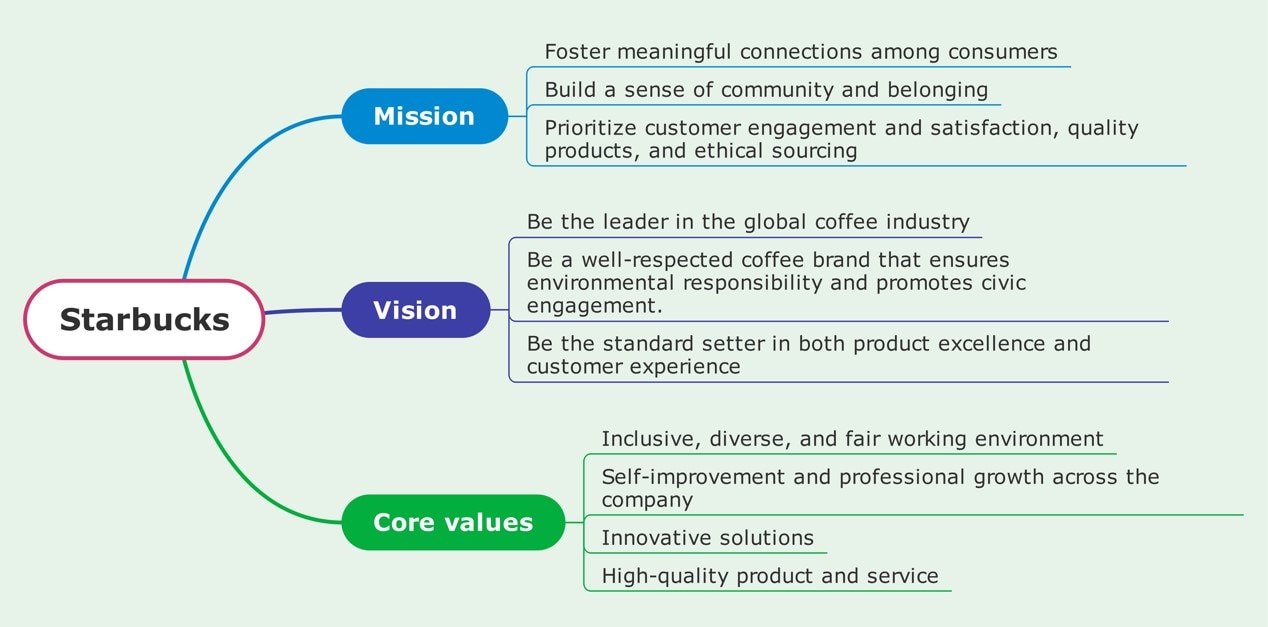Starbucks’ mission and vision statement analysis offers insight into why the company has become synonymous with coffee culture worldwide. With more than 32,000 stores across 80 countries, Starbucks is now one of the most recognized and influential brands on the planet.
But what drives this global success? The answer lies in Starbucks’ mission and vision statements. They define the company’s direction and strategy, shaping how it engages with stakeholders and communities alike.
Let’s take a closer look at Starbucks’ mission and vision statements and uncover valuable lessons entrepreneurs and businesses can apply to their own strategies.
In this article
1. Overview of Starbucks

Starbucks’ journey began in 1971 in Seattle, Washington, with a single store selling roasted whole bean coffee. Today, it has expanded into 80 countries with a mix of company-operated and licensed stores. Beyond coffee beans, Starbucks now offers a wide range of coffee beverages, teas, pastries, and branded merchandise.
Here’s a quick overview of Starbucks, a brand that seamlessly blends coffee culture with community and innovation.
| Aspect | Information |
| Founded | 1971 in Seattle, Washington, as Il Giornale coffeehouse |
| First Expansion | 1987, when Howard Schultz rebranded the company as Starbucks |
| Headquarters | Seattle, Washington |
| CEO | Brian Niccol, since September 9, 2024 |
| Employees | The company reported it had over 360,000 employees across 32,000 stores globally. |
| Fiscal Year End | September 30 |
| Annual Revenue | The company earned $36.18 billion in the fiscal year 2024 |
| Operating Profit | Approximately $5.409 billion for FY 2024 |
| Market Cap | Around $100.25 billion as of late August 2025 |
| Digital Sales | About 22% of total sales (FY 2024) |
| Global Presence | 32,000 stores across 88 markets as of FY 2024 |
| Key Markets | Europe (largest), USA, China, Germany; new growth in Brazil, El Salvador, and Venezuela (2025) |
| Official Sites | Starbucks Official Website |
| Official PDF | Starbucks Fiscal 2024 Annual Report |
2. Key Parts of Starbucks Mission and Vision Statement Analysis
An organization's mission statement indicates how the company serves its target customers. Meanwhile, a company's vision statement focuses on its strategic direction in terms of what the firm wants to achieve in the future. The way a company implements these corporate statements determines its success in responding to the competitive environment.
Starbucks’ mission statement emphasizes the philosophical purposes of the business, while its vision statement emphasizes leadership in the coffee industry. Here’s a quick analysis of Starbucks' mission and vision statements.
Now, let’s look at each of these driving principles individually.
2.1 Mission Statement
Starbucks' mission statement is very powerful: “To inspire and nurture the human spirit—one person, one cup, and one neighborhood at a time.” This statement highlights the company’s commitment to being more than just a coffeehouse. It shows that Starbucks wants to build meaningful relationships with its customers and make positive contributions to the broader community.
Starbucks’ mission statement consists of three core components:
- To inspire the human spirit
- To nurture the human spirit
- One person, one cup, and one neighborhood at a time
To inspire the human spirit.
Inspiring another person is not an easy task, but Starbucks is committed to doing so through different touchpoints. The moment a customer enters a store, they are greeted by the rich aroma of freshly brewed coffee. From the welcoming ambiance to the barista who serves the order, the in-store experience creates a sense of calm and community. This same sense of comfort also encourages customers to try new offerings, like seasonal beverages and other Starbucks products.
To nurture the human spirit.
Everyone wants to feel included and accepted just as they are, and that’s exactly what Starbucks’ mission statement emphasizes. By promising to nurture the human spirit, the company demonstrates its commitment to creating safe and inclusive spaces for all. When customers feel valued and part of a larger community, they develop a sense of trust in the brand, often becoming lifelong customers. A simple yet powerful example of this is when a Starbucks barista connects with customers by addressing them on a first-name basis.
Another crucial element of this mission is the ethical sourcing of coffee beans. Starbucks’ mission statement isn’t limited to customers but it extends to all stakeholders, including suppliers and employees. The company invests in programs that support coffee-growing communities, helping them improve their living standards and strengthen their futures.
One person, one cup, and one neighborhood at a time.
This part focuses on Starbucks' impact on individual customers as well as the larger community. The goal is to build meaningful relationships with all stakeholders while creating a positive ripple effect in local communities. Starbucks actively contributes to the neighborhoods it serves through local events and community programs. It also offers customized products and services that resonate better with local tastes.
In essence, this mission is all about creating a bigger impact through small, meaningful interactions
2.2 Vision Statement
The company’s vision is “to establish Starbucks as the premier purveyor of the finest coffee in the world, while maintaining our uncompromising principles as we grow.”
This statement reflects Starbucks’ ambition to be recognized as the world’s leading coffee provider. But it also goes beyond coffee. The vision emphasizes growth rooted in responsibility and ethics. Starbucks aims not only to serve premium coffee but also to uphold its duty toward the communities and environments it touches.
The two major components of the vision are:
- To be the premier purveyor of the finest coffee in the world
- To maintain its principles as it grows
To be the premier purveyor of the finest coffee in the world
Starbucks is, first and foremost, a coffee company. Coffee is its core offering, and everything else revolves around it. This part of the vision statement underlines Starbucks’ commitment to excellence and leadership in the coffee industry. After all, if they can’t consistently deliver premium-quality coffee, there would be little for customers to look forward to.
But Starbucks doesn’t stop at great coffee. To live up to this ambition, the company continues to innovate. It experiments with new flavors, brewing techniques, and menu items to stay ahead of competitors and provide customers with fresh experiences.
To maintain its principles as it grows
This is what sets Starbucks apart from other coffee chains. Providing high-quality coffee is one thing, but offering a meaningful, responsible experience is another. Starbucks’ vision emphasizes that true success cannot come at the expense of its values.
From sourcing coffee beans responsibly and uplifting farming communities to reducing environmental impact and supporting diversity, Starbucks ensures that growth and ethics go hand in hand.
2.3 Core Values
To uphold any company’s mission and vision, a strong set of core values is essential. These values act as guiding principles that enable a brand to achieve the benchmarks it sets for itself. For Starbucks, the core values that drive its operations are:
- Craft
- Results
- Courage
- Belogning
- Joy
Let’s analyse each of these values in greater detail.
Craft
For Starbucks, craft means paying attention to every detail. Whether it’s brewing the finest coffee or experimenting with new flavors, the brand is committed to excellence. At Starbucks, passion and creativity go hand in hand, making sure every product and experience feels personal and exceptional.
Results
This value reflects the company’s focus on delivering measurable outcomes. Starbucks’ mission and vision aren’t just aspirational statements; they are visible in their actions. From financial performance to customer satisfaction and sustainability targets, this value ensures that Starbucks turns its promises into achievements.
Courage
Courage at Starbucks is about taking bold steps, even when its difficult. The company embraces difficult conversations with respect and strives for transparency in its operations. This value also underscores the company’s commitment to innovation beyond its comfort zone and set new standards in the industry.
Belonging
Starbucks is dedicated to creating safe, welcoming spaces for the communities it serves. Whether it’s customers, employees, or suppliers, the company fosters an environment where everyone feels accepted, valued, and respected. By including belonging as a core value, Starbucks highlights its commitment to celebrating diversity and inclusion at every level.
Joy
Ultimately, the purpose of a great coffeehouse is to bring happiness to those who step inside. From the aroma of freshly brewed coffee to the sense of connection within its stores, Starbucks is all about creating joyful moments. This value represents the company’s mission to build safe spaces and spread positivity.
3. How to Make a Mission and Vision Statement Analysis for a Company?
Analyzing a mission and vision statement helps identify potential weaknesses in a company’s direction. But before evaluation, it’s important to first understand what each statement represents.
A vision statement defines a company’s long-term aspirations, what it ultimately seeks to become. A mission statement, on the other hand, explains the company’s current purpose and the roadmap it intends to follow in order to achieve its vision.
To evaluate the effectiveness of a company’s mission and vision, consider the following questions:
- Mission Statement
- Does it clearly communicate the company’s purpose?
- Does it highlight the company’s core strengths?
- Is it focused, realistic, and actionable?
- Is it aligned with the current market environment?
- Is it consistent with the company’s vision?
- Vision Statement
- Does it clearly express what the company aspires to be?
- Is it inspiring and motivating for employees and stakeholders?
- Does it mention the values you want to be remembered for?
3.1 Use a Professional Mission and Vision Statement Analysis Maker
If you want to analyze a mission and vision statement, a mind map can be a powerful tool for visually organizing your ideas. That’s where EdrawMind makes the job easier. The tool provides ready-made templates specifically designed for analyzing mission and vision statements. All you need to do is customize them for your company. And the best part? You can collaborate with your team in real time, making the entire process smoother and more efficient.
3.2 Steps to Make Starbucks’ Mission and Vision Statement Analysis
Planning to analyze a mission and vision statement with EdrawMind? Here’s a step-by-step guide you can follow for professional results.
Step 1: Login & Get Started
- Open EdrawMind and log in with a social account or a free Wondershare account. You can also access and use EdrawMind Online in your browser.
- On the homepage, click Create, then select Local MindMap to start a new file.
Tip: Use the online version to get started quickly.
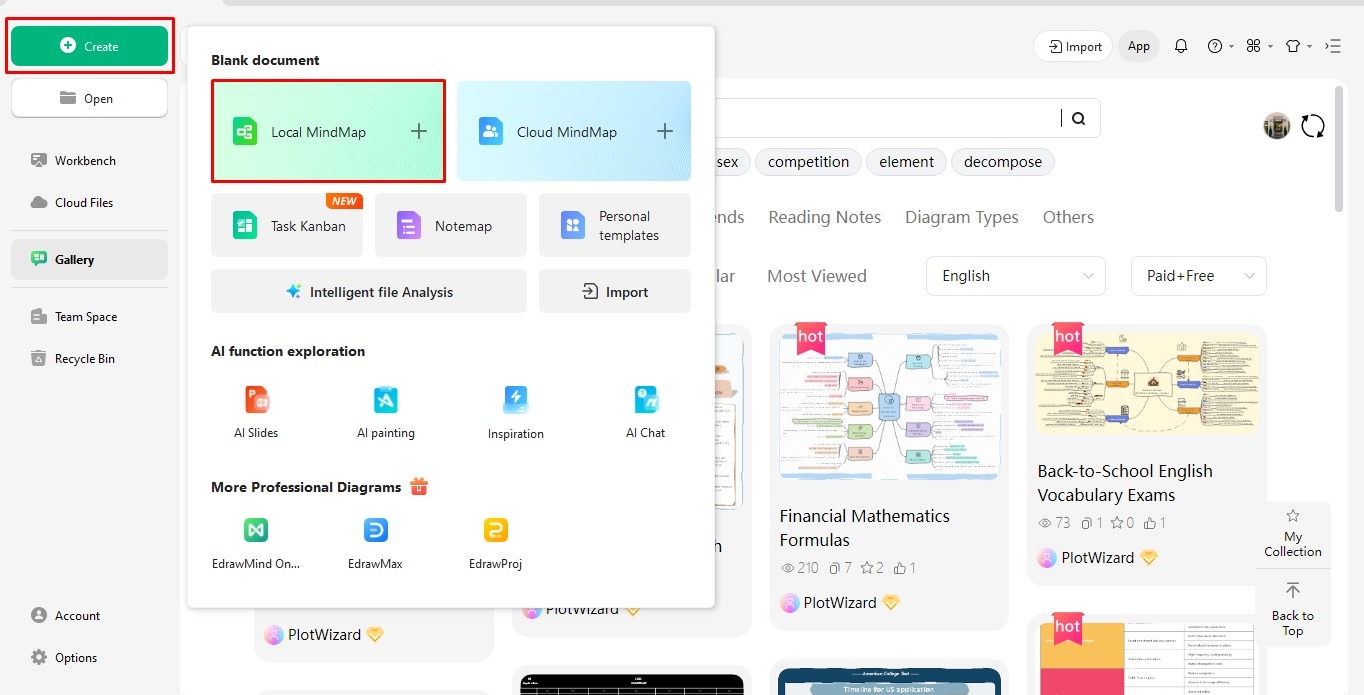
Step 2: Choose a Layout
- Click to reveal the right editing menu panel. Now, select the Main Idea and change the Layout from the menu.
- Alternatively, you can change the Layout by selecting the Main Idea and accessing the floating menu.
- Browse through the layouts and pick one that fits your analysis style.
Tip: You can also select a pre-built template and customize it to save time.
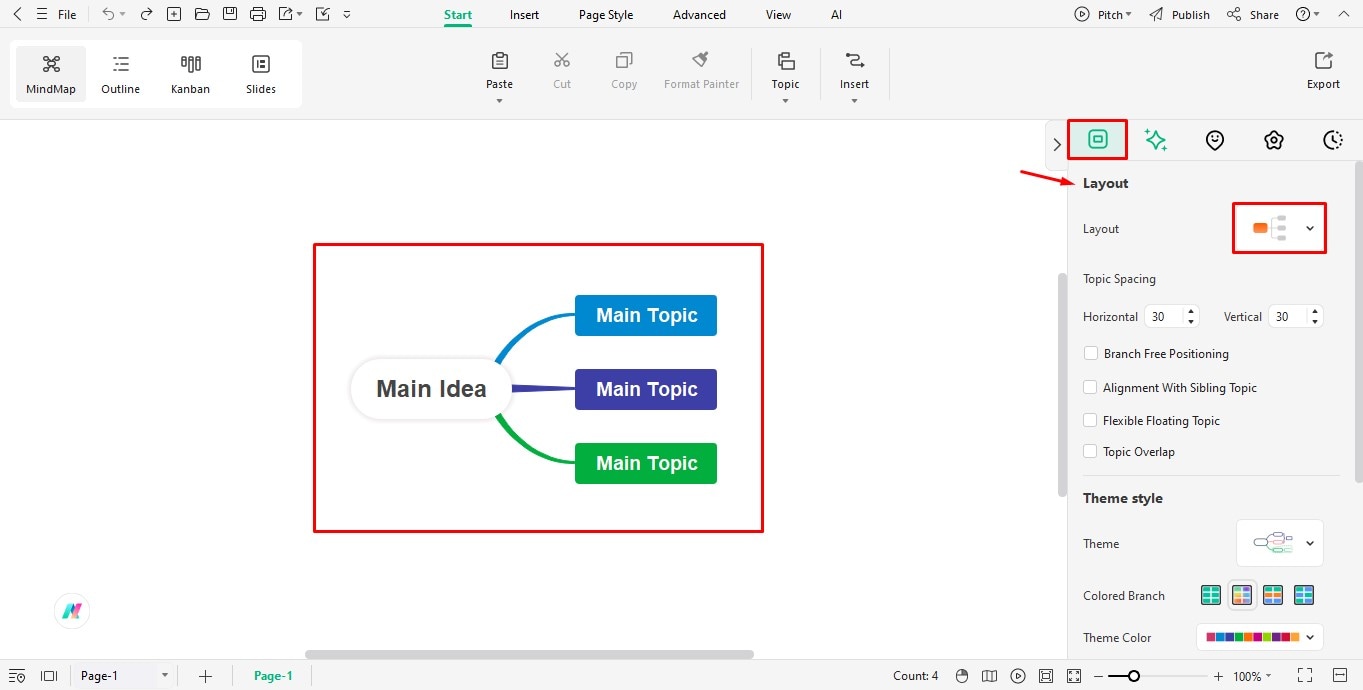
Step 3: Add Main Sections
- It’s time to start editing the mindmap. Click the Main Idea and change the text to ‘Starbucks.’
- Similarly, edit the text inside the key branches to reflect a mission and vision statement analysis.
- EdrawMind allows you to customize your mind map in different ways. For example, you can change the shape, border color, and border size of every element. You can also fill color inside the text boxes to make them pop. You can either access these customization options through the floating menu. Or you can reveal the right editing panel to make these changes.
Tip: Don’t overcrowd the branches. Keep the text concise and focused.
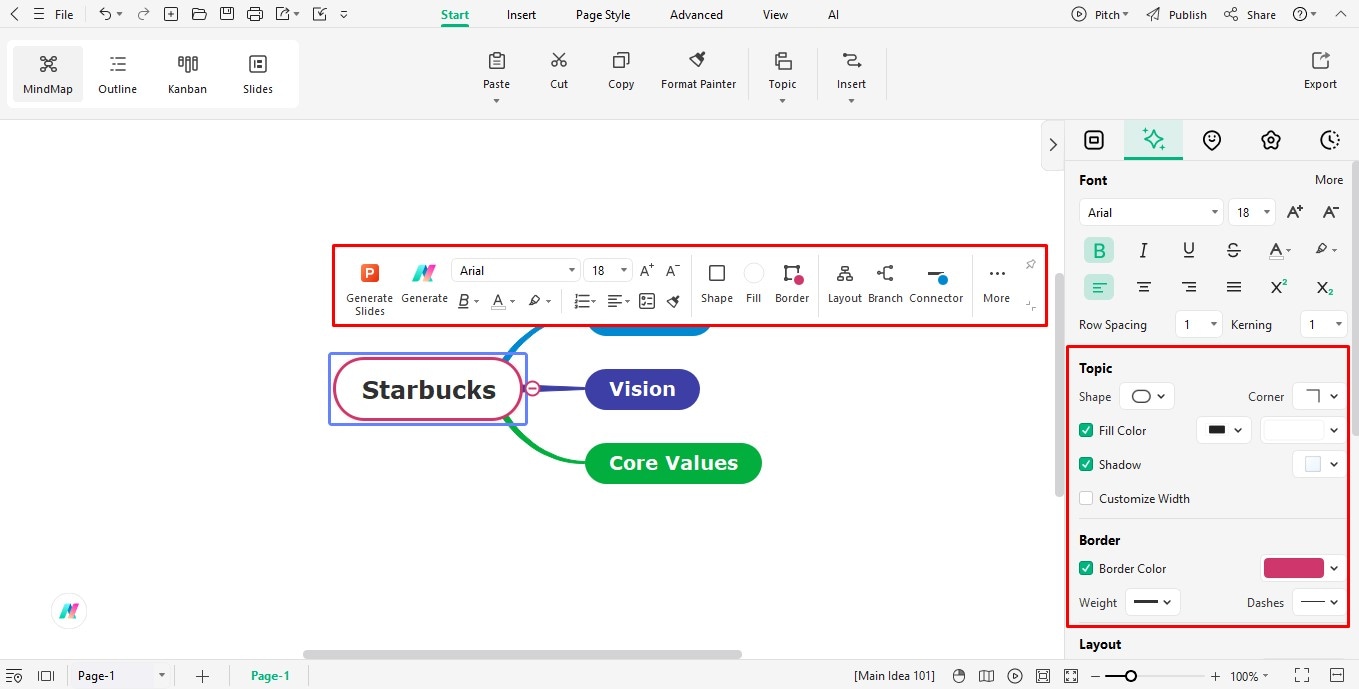
Step 4: Add Subtopics for Details
- Let’s expand each element for a detailed analysis. Click Mission to reveal the floating menu. Select More > Subtopic to add a subtopic. Follow the same steps to add more subtopics.
- Do the same for Vision, and Core Values.
- You can edit the subtopic layout, its shape, border size, and color from the editing panel on the right.
Tip: Use short phrases instead of long sentences; it makes your map easy to read.
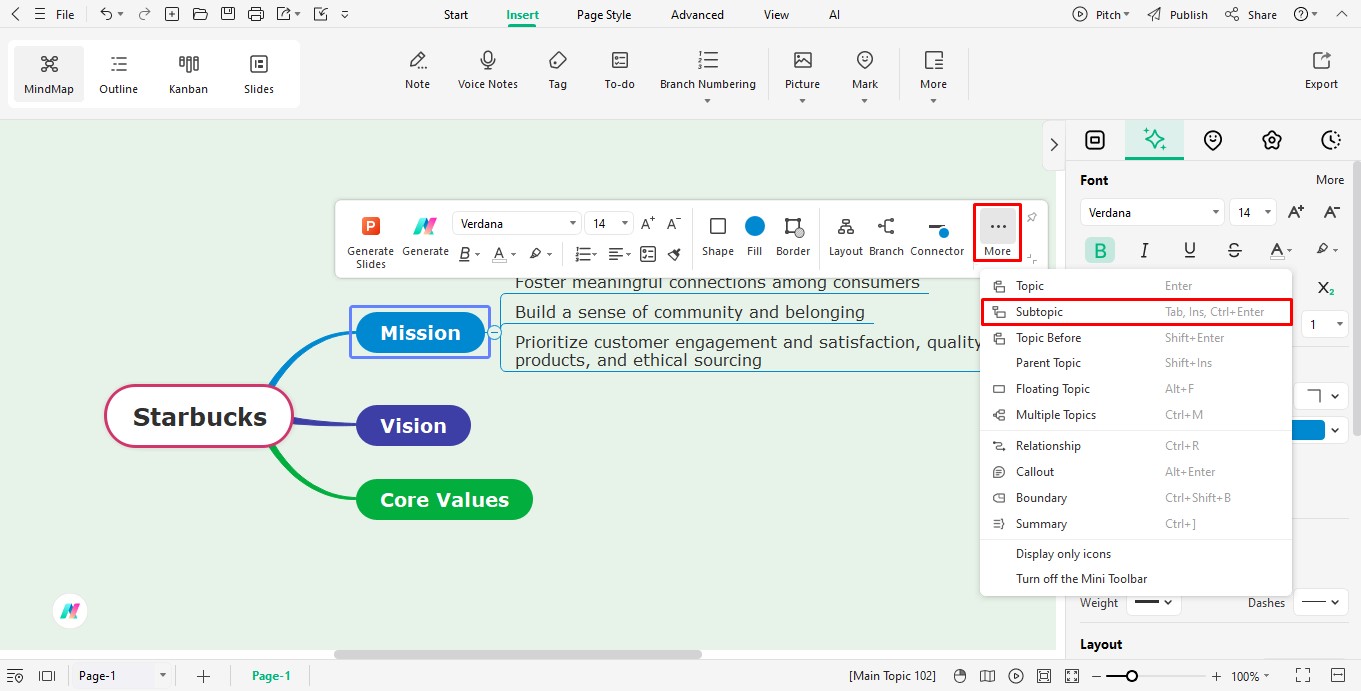
Step 5: Save or Share Your Analysis
Continue adding more subtopics until your analysis is complete.
Once you’re satisfied with the image, click File in the top-left corner to view your saving options.
- Click Export if you want to save your analysis in JPG, PNG, PDF, Word, Excel, HTML, or SVG format.
- If you want to collaborate with your team on the analysis, choose Share from the dropdown menu.
Tip: Exporting the analysis in PowerPoint format will help you create presentations quickly.
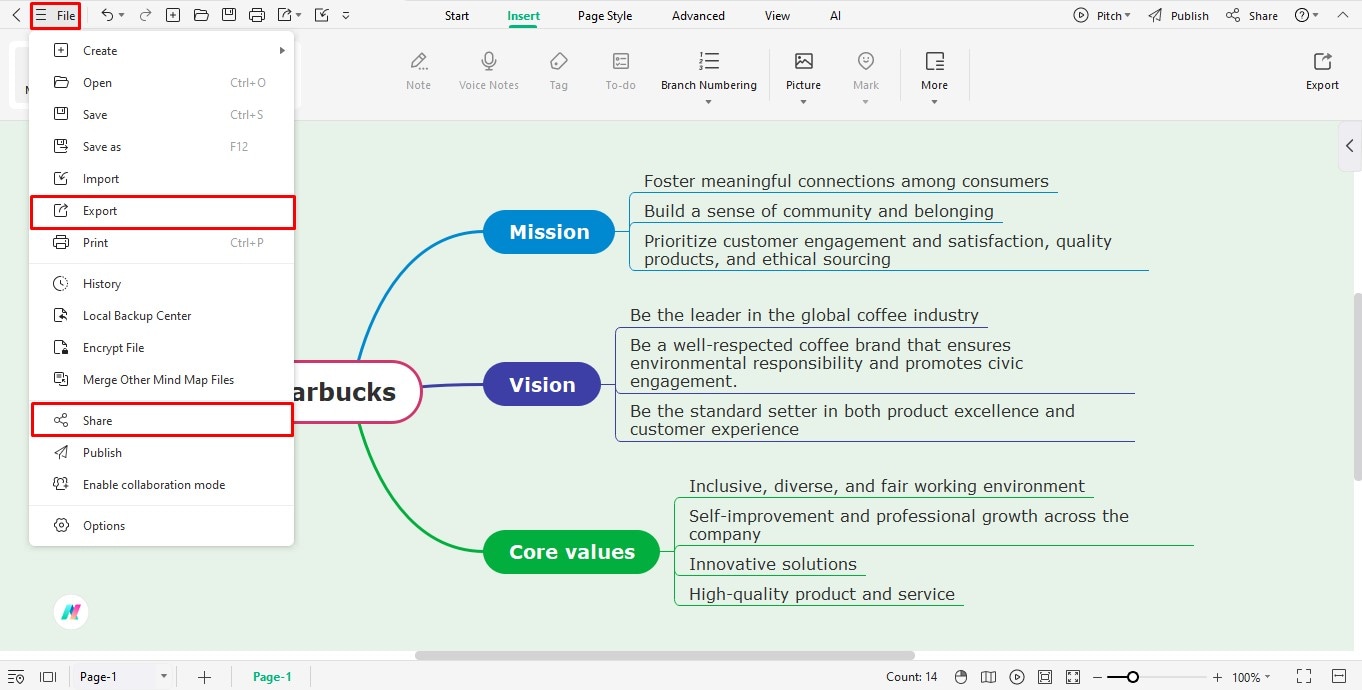
4. Tips to Make a Mission and Vision Statement Analysis
A mission and vision statement is crucial for any business. However, not every business knows how to write statements that best represent who they are and where they want to be. This is where a thorough mission and vision statement analysis can help. Here are a few tips you can apply to keep your assessment effective.
Focus on alignment
A mission statement must be aligned with the company’s vision. So, analyze if the mission statement offers a clear road map of where the company is and how it plans to meet its long-term goals.
Stay Focused
It’s easy to lose yourself in the details during an analysis. The best way to push through is to identify key elements and focus on them. Avoid long and vague sentences and stick to the point.
Identify Core Strengths
If you want your findings to be effective, identify the company’s core strengths and whether it's able to meet the benchmarks it has set for itself. Highlight what sets the company apart from its competitors. It could be the uniqueness of their product or service, their core values, or their approach towards customer satisfaction.
Add side notes
Remember that this is your analysis. So, don’t be afraid to express your opinion based on facts. Include your thoughts on what works for the company, and highlight areas of improvement.
5. FAQs about Starbucks Mission and Vision Statement Analysis
FAQ
-
What are the 4 P’s of Starbucks?
The 4 P’s of marketing are Product, Price, Place, and Promotion. In the case of Starbucks, these 4 P’s stand for:- Product: The company’s premium offering is its hot and cold beverages and branded merchandise. But more than the product itself, it’s the Starbucks experience that creates excitement for customers.
- Price: Starbucks uses premium pricing, and its products cost more than its competitors
- Place: The company has 32,000 stores worldwide. They are positioned in urban centers, airports, shopping areas, and other high-traffic places.
- Promotion: Starbucks relies on digital and social media campaigns, as well as loyalty programs, to promote its products.
-
What is the motto of Starbucks?
Starbucks' motto is deeply rooted in its mission statement. The company wishes “To inspire and nurture the human spirit - one person, one cup, one neighborhood at a time.” -
What strategy made Starbucks so successful?
Starbucks’ success is the result of multiple effective strategies. The most prominent ones include:- Creating personal experiences for customers through its products and welcoming stores.
- Positioning themselves as the premium coffee providers.
- Taking a lead in digital ordering, contactless payments, and loyalty programs.
- Innovating beverages that resonate with local communities.
- Treating its employees as partners, fostering a healthy working environment.
-
Who is Starbucks' target market?
Starbucks' primary customer is:- Between the ages of 18 and 40
- Professionals, students, and young adults
- Belonging to the middle and upper-middle classes
- Willing to pay a premium price for the brand’s image and overall experience.



